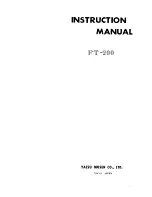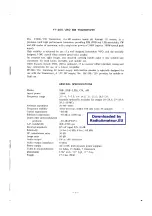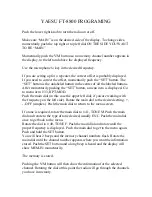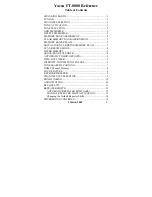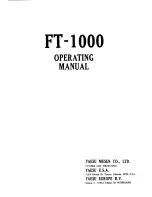
65-2451RK Hydrogen Transmitter • 3
Amplifier
The amplifier converts the electrical output from the detector to a 4 to 20 mA signal that
corresponds to the detection range and transmits the signal to a gas monitoring controller.
A foam gasket that orients the amplifier and keeps it from rotating is installed on the
bottom of the amplifier. A label on the amplifier indicates the detector drive current. This
drive current is factory set and is dictated by the combustible gas to which the detector is
calibrated. Consult RKI Instruments, Inc. if you plan to change the calibration gas for the
transmitter, for example from a hydrogen calibration to a methane calibration. The
amplifier includes the detector terminal strip, controller terminal strip, span pot, zero pot,
and test points (see Figure 1).
Controller Terminal Strip
The controller terminal strip is a three position plug-in style terminal strip located near the
top of the amplifier. Use the controller terminal strip to wire the transmitter to a controller.
Detector Terminal Strip
The detector terminal strip is a four position plug-in style terminal strip located below the
controller terminal strip. Use the detector terminal strip to connect the detector to the
amplifier.
NOTE:
The detector is factory-wired to the detector terminal strip. See “Wiring the
Hydrogen Transmitter to a Controller” on page 5 for all wiring procedures
related to the transmitter.
Zero Pot
The zero pot is located in the upper left corner of the amplifier (see Figure 1). Use a small
flat blade screwdriver to turn the zero pot’s adjustment screw and adjust the amplifier’s
zero (fresh air) output during the start-up and calibration procedures. Turn the adjust-
ment screw clockwise to increase the zero output and counterclockwise to decrease the
zero output.
Span Pot
The span pot is located to the right of the zero pot (see Figure 1). Use a small flat blade
screwdriver to turn the span pot’s adjustment screw and adjust the amplifier’s gas
response output during the calibration procedure. Turn the adjustment screw clockwise to
increase the zero output and counterclockwise to decrease the zero output.
CAUTION:
The amplifier includes two additional potentiometers. They are factory-set. Do not
adjust them.
Test Points
The test points are on the left side of the amplifier (see Figure 1). The test points produce a
100 mV to 500 mV output that corresponds to the transmitter’s 4 to 20 mA output. Use the
test points and a voltmeter to measure the amplifier’s output during the start-up and
calibration procedures. The black test point in the lower left corner is the negative (-) test
point and the red test point below the zero pot on is the positive (+) test point.
Junction Box
Use the junction box to install the transmitter at a mounting site that is remote from the
controller. The junction box protects the amplifier and wiring connections made to the
amplifier. Use the top 3/4 inch conduit hub to connect wiring from the amplifier to the
www.
GlobalTestSupply
.com
Find Quality Products Online at:






















